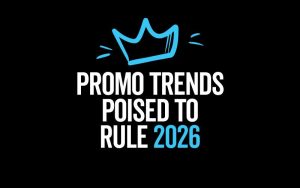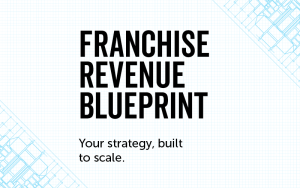Highlights:
- Multi-touch attribution tracks every marketing interaction across digital and physical channels, revealing which touchpoints truly drive conversions and ROI.
- Single-touch attribution models—like first- or last-click—oversimplify results, often crediting the wrong channel and ignoring offline actions.
- Accurate ROI tracking starts with consistent tagging: UTMs, QR codes, promo codes, and location-based tracking tie every lead to its source.
- Integrating CRM, POS, and call-tracking systems connects online engagement with in-store purchases and reveals cross-channel performance.
- Multi-touch attribution tools and dashboards (like Google Analytics 4, HubSpot, and Ironmark’s Ignition platform) centralize reporting for multi-location marketers.
- When all touchpoints are tracked in one system, marketers can measure ROAS, CPL, and revenue per campaign to optimize spend and improve performance across locations.
Today’s marketing campaigns are everywhere—and we mean everywhere. Your customer’s day might look like this: scroll Instagram → see your paid ad → check email → toss a postcard on the kitchen counter → Google your brand → drive to your store. That’s at least five touchpoints before anyone even touches their wallet.
If you’re a multi-location marketer juggling multiple marketing channels like paid search, email blasts, social ads, direct mail, in-store signage, and the occasional carrier pigeon (hey, it’s definitely novel), you know the real challenge isn’t just getting customers—it’s figuring out which of the multiple marketing channels actually worked.
Welcome to the world of multi-touch attribution. It’s messy, it’s marvelous, and if you want to track ROI with any level of accuracy, it’s where you need to be.
The Multi-Touch Measurement Problem
First, let’s define the beast. A multi-touch campaign is any marketing effort where a potential customer interacts with multiple marketing channels before converting. So, email → paid social → store visit? That’s a textbook case.
But modern marketing attribution has gotten rather complicated. Blame smartphones, laptops, tablets, and that smart fridge that keeps Googling recipes. People bounce between devices, platforms, and locations, all while marketers are left squinting at Google Analytics trying to piece together the journey like it’s some Escape Room code.
Now throw in multi-location marketing, where different stores might have different promos, signage, regional campaigns, and even varying levels of customer service. Congrats! You’ve leveled up to “doing the Escape Room while blindfolded” mode.
The Flaws of Single-Touch Attribution Models
We all love simplicity. But trying to streamline the data through single-touch marketing attribution—where you give all the credit to the first click or last click—is like only rewarding your nephew who figured out the last Escape Room clue (you all had something to do with escaping, right?)
Here’s where these marketing attribution models miss the mark:
- They oversimplify reality: Your customer didn’t just see one ad and sprint to your store like it’s Black Friday. They researched, they browsed, they maybe got distracted by a TikTok dance challenge. Multiple media moved them to the sale.
- The wrong channel gets the credit: If a paid ad sparks interest but the customer ends up converting through organic search later, the paid ad gets no credit at all (just like your brilliant code cracking in the first challenge).
- Offline actions get ignored: It can be difficult to track physical ads and other motivators. Let’s say your ad drives someone into a store and they buy a couch. No online purchase, no cookie trail, no data. There’s no way to reliably attribute that sale.
Real-world example: A home goods brand runs a geo-targeted Facebook ad campaign across multiple store regions. Online conversions are nothing to write home about. But in-store sales? Up 22% in the zip codes served by the ad. Without proper tracking, that success never makes it to the marketing report. So let’s get down to it. How do you track for accurate attribution?
Related: What Multi-Location Marketers Get Wrong About Attribution
Cross-Channel Attribution Tools to Track ROI Across Touchpoints
It’s not just about knowing what worked—it’s about proving it with data. Here’s your marketer’s toolbox:
- Use UTMs, QR codes, and Promo codes: Whether it’s a digital ad or a direct mail piece, track it like it owes you money (because, well, it kind of does).
- Do a CRM + POS Integration: Your customer bought something in-store? Fantastic. Now make sure that purchase gets tied back to the Facebook ad they clicked three days ago. A well-integrated CRM and POS system makes the connection.
- Implement Call Tracking & Form Fills with Location Identifiers: Use unique phone numbers and location-tagged forms so you know exactly where leads came from.
- Deploy Campaign Tagging by Channel + Location: Tag everything. Channel, creative, store—whatever you can measure. Consistency here unlocks accurate multi-touch attribution later.
Pro Tip: Create custom landing pages and store-specific phone numbers. When that page gets traffic or the phone rings, you’ll know exactly which campaign pulled its weight.
Cross-Channel Attribution Tools That Help Make Sense of the Data
Ready to bring order to the chaos? These tools are here to help:
- Multi-Touch Attribution Software: Try tools like HubSpot, Wicked Reports, or Google Analytics 4 with attribution modeling. They assign value across the customer journey—not just the final click.
- Brand Management Platforms: Some platforms cater to franchises and multi-location brands with campaign reporting by store or region, generating centralized reporting for the multi-location marketing big picture. See Ironmark’s own Ignition platform, which harnesses attribution and optimizes spend across all locations.
- Custom Dashboards: Whether built in-house or with an agency partner, dashboards that combine online + offline KPIs (like ROAS and store traffic) give you the full ROI.
Related: 9 Digital Marketing KPIs that Prove ROI
Pick tools that let you filter by location, channel, and date. Because the Chicago store may be crushing it with direct mail, while Austin responds to email. Your data should know that.
Multi-Touch Attribution Finally Tells the Full Story
Here’s what a fully tracked multi-touch journey might look like:
- Digital Ad: Facebook carousel ad with UTM tags →
- Email Reminder: Personalized email nudging return visit →
- Print Mailer: QR code leads to store-specific landing page →
- In-Store Visit: Promo code entered at POS →
- Repeat Visit: Triggered loyalty campaign email = ROI goldmine
When all touchpoints feed into a centralized system, you can finally track:
- Revenue per campaign
- ROAS (Return on Ad Spend)
- CPL (Cost per Lead)
- Foot traffic increases per store
Suddenly, your marketing report doesn’t just “look nice”—it tells a clear story. One that gets you more bang for your budget.
You Can’t Improve What You Don’t Track
Yes, marketing attribution is evolving. No, it doesn’t have to be perfect to be powerful.
Start with the most important of the multiple marketing channels. Get consistent with UTMs and tagging. Sync your CRM, POS, and call tracking tools. From there, let multi-touch attribution shine a light on what’s working.
And hey—don’t do it alone. We’re your omnichannel marketing team, ready to help you strategize, systemize, and optimize your way to stronger ROI.
Stay tuned for our next article, where we dive into how smart multi-touch attribution along the customer journey powers stronger creative mixes, better spending decisions, and a national-local marketing meld that benefits both the overall brand and its individual locations.
Until then—track smart, market smarter.



